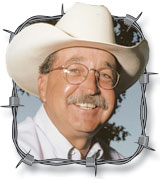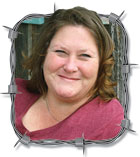Many years ago, when I was teaching at a university and coaching the livestock judging team, I took my students to a local purebred cattle farm where we were going to practice on several classes of animals the owner had selected for us. As the students quietly evaluated the four heifers in the first class and took notes, I noticed that two of the animals had been clipped by the owner in preparation for an upcoming show. Since this was one of the first workouts of the year for this rookie team, I wondered how many would notice the fresh haircut when we got back to campus.
About half of the students put the two ‘clipped heifers at the top of the class, with the other youngsters scattering them about the placings with the two longer-haired animals. “How many of you noticed that two of the females had their heads trimmed?” I asked later that day when they were preparing to give me their oral reasons. Only one boy raised his hand.
“And where did you place those two individuals?” I quizzed the attentive farm boy.
“Well,” he drawled out in a not-too-assertive tone, “I figured that if the owners thought they were good enough to fix up for a show, they must be the best ones there.” The young man was correct and went on to have a pretty successful judging career. The others learned a lesson in paying attention to everything about an animal.
I was reminded of that story last week when I attended a special bred-heifer sale at a local sale barn, sitting beside an old friend and experienced cattleman that I hadn’t seen in several years. All the heifers at the sale were of high quality, having had to go through a list of very stringent requirements just to be allowed in the auction, and my friend was in the market for about a dozen of the high-priced replacements. The animals were offered in lots of three to six head and were alternated amongst the consignors, but every time a lot from one particular seller would enter the ring, my friend would comment on the attractiveness of the animals and start bidding. He would eventually drop out of the bidding because these heifers were bringing from $300 to $400 more than the other good heifers that were being sold. He was always disappointed he couldn’t afford them.
As the third lot of the ‘attractive heifers’ entered the ring, I leaned over to my friend and asked him if he realized that these heifers, that he liked so much, were the only ones in the sale that had had their heads and tails clipped. In stunned silence, my friend stared at me in initial disbelief. “My gosh, you’re right.” he finally answered. “That’s why they look so good.”
Now, don’t get me wrong, these heifers were really good and probably deserving of a few more bucks per head then the norm. But, from where I sat, the $10 or $20 per head that he had paid someone to run them through the chute and give them a trim-job was paying off big-time.
As I relayed this story to my wife when I returned home from the sale, thinking she would get a kick out of it, she surprised me be asking, “Why don’t you clip your calves before you sell them?”
Shocked, I answered, “I don’t think it would work on feeder calves sold in lots of 50-60.”
“Have you ever tried it?” she responded. Sheepishly, I admitted that I had not.
This November, it just might be worth your trip to the livestock auction to see your first set of feeder cattle sold – with fresh haircuts.
Jerry Crownover is a farmer and former professor of Agriculture Education at Missouri State University. He is a native of Baxter County, Arkansas, and an author and professional speaker. To contact Jerry about his books, or to arrange speaking engagements, you may contact him by calling 1-866-532-1960 or visiting ozarksfn.com and clicking on ‘Contact Us.’







